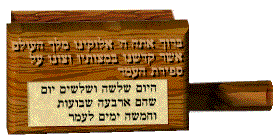Lag B’Omer
Lag B’Omer is the 33rd day of the Counting of the Omer (a seven-week period of semi-mourning that begins on the second day of Passover) and corresponds to the 18th of Iyyar. The Omer (a certain measurement) of barley, which was cut down and brought to the Temple as an offering, was to be counted for forty-nine days beginning with the second night of Passover (the 50th day is Shavuot). This counting is still practiced today.
Lag B’Omer marks the culmination of a plague that killed twenty-four thousand disciples of Rabbi Akiva during the period between Passover and Shavuot many years ago. The plague ceased on the day of Lag B’Omer, which consequently became a holiday. This day is therefore observed as a semi-holiday, when weddings are permitted. Other forms of semi-mourning practiced during this period are suspended on this day.

According to Jewish writings, it is believed that the appearance of manna referred to in Exodus 16 first occurred on Lag B’Omer. Kabbalists hold this date to be the anniversary of the death of Simeon b. Yohai, whom they regarded as the author of the Zohar.
There is a custom of children playing with bows and arrows on Lag B’Omer, which has a number of explanations scholars have suggested.
Lag B’Omer in modern Israel is a school holiday. Children typically light bonfires in towns and villages, and universities celebrate students’ day.
